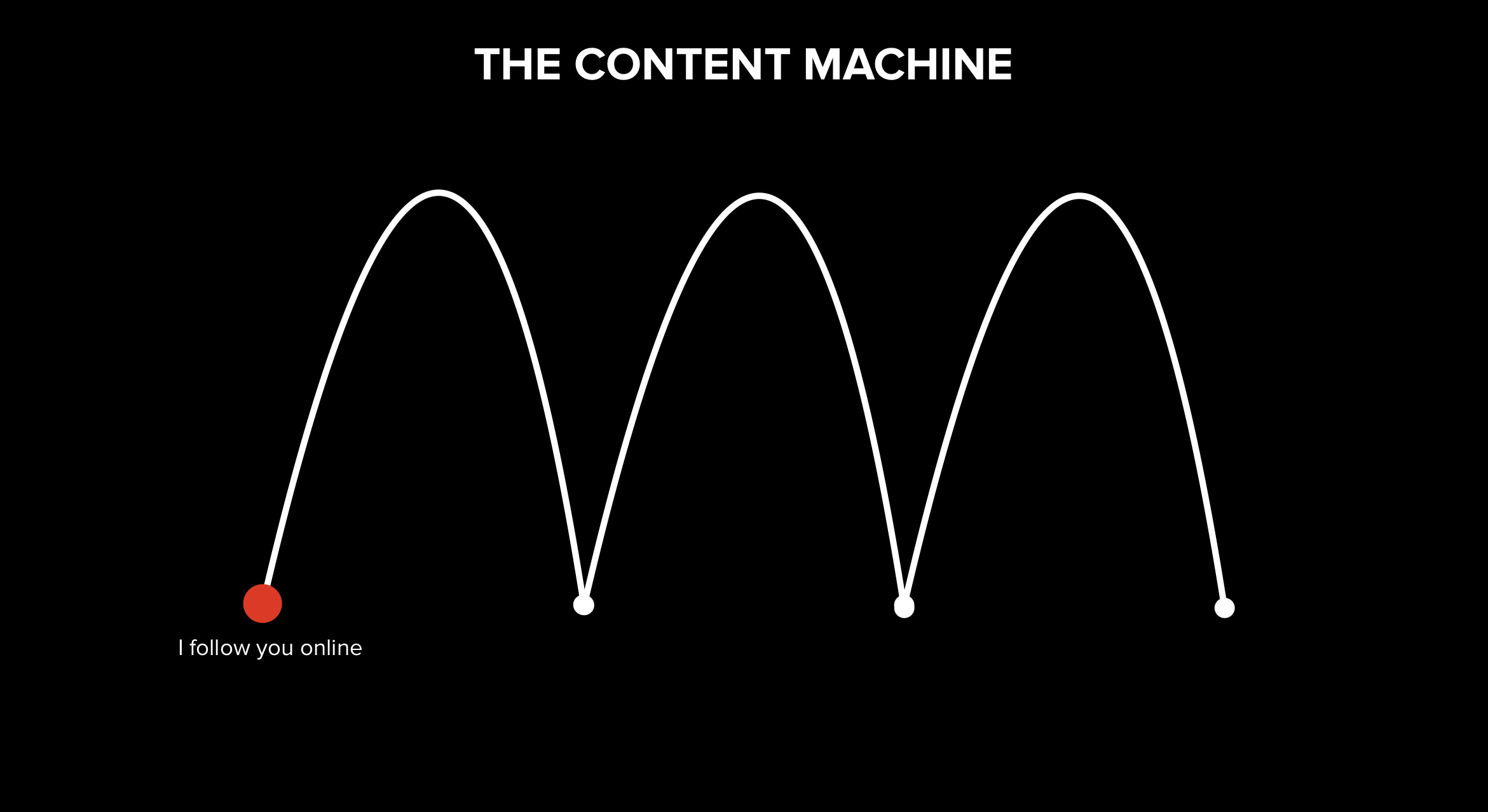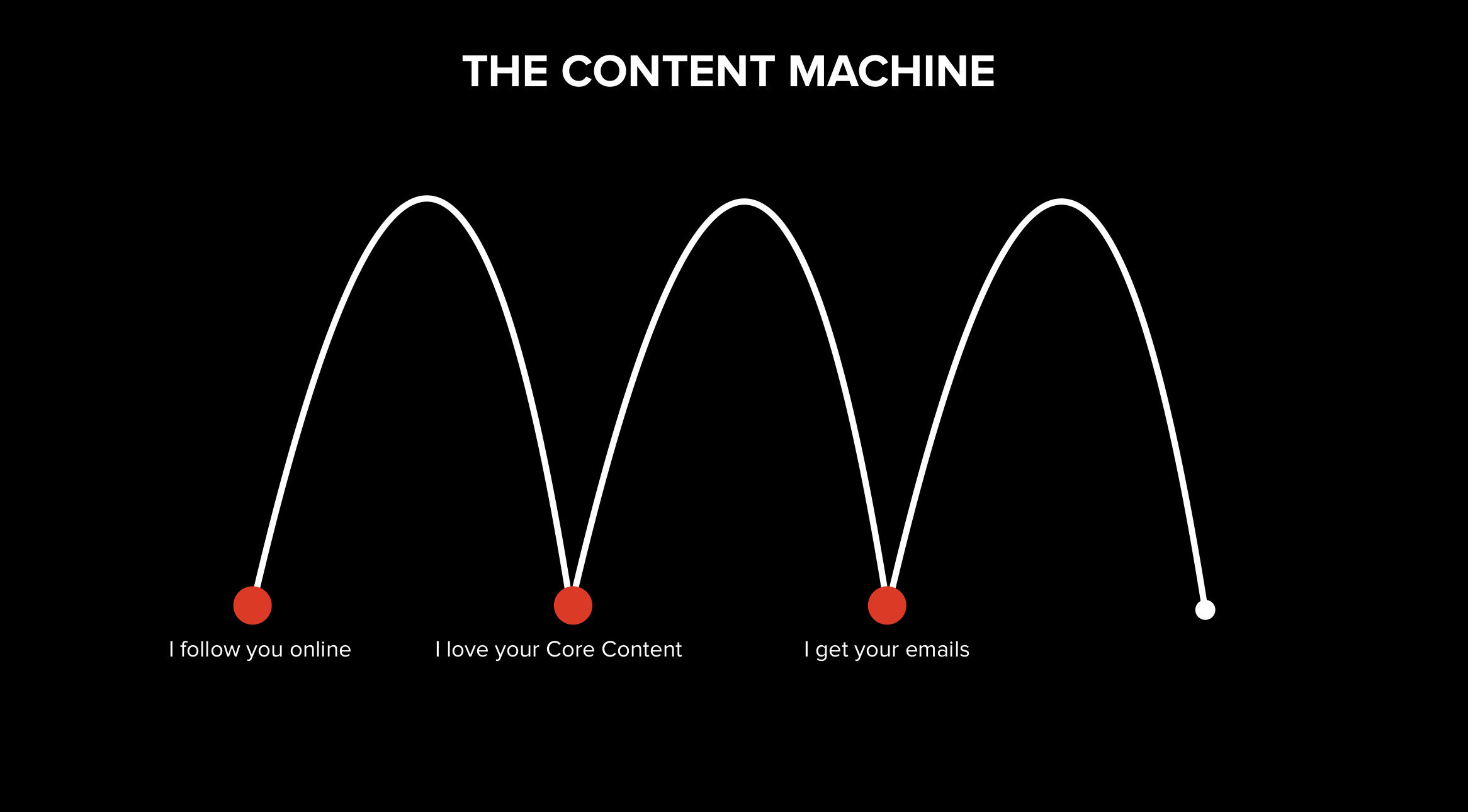TDW #016: Craft Your Content Machine

Forget 57-step marketing funnels. Forget 12-month nurture sequences. Forget complicated editorial calendars.
We're not gonna use any of that.
In every business I’ve ever had, the best performing funnel is always the simplest. It’s not complicated. It’s almost offensively easy. And it sounds something like this when it works:
- I’ve followed you online for awhile…
- I love your content…
- I’m on your email list…
- How can we work together?
That’s it.
The trick, if there is one, is a long-term commitment to the process.
Most entrepreneurs will drift to flashy, here-today-gone-tomorrow tactics instead of boring simplicity. It’s always to their detriment.
When you ignore the fundamentals in favor of the flashy, you inherit the fate of Sisyphus—roll the boulder up the hill today only to have it roll back down the hill tomorrow.

I want you to remember this every time you’re tempted to change course. Here’s how to avoid the Sisyphusian fate…
Stage 1: I follow you online.

What is this?
Your journey to more clients and less content starts with consistency. We keep our select social channels stock full of content using our Rhythm & Schedule. Why? Because we never know:
A.) who’s in our audience
B.) what content will pull them across the line
This is also why you’ll want to be super selective in what platforms you commit to.
Unless you’re a global brand, you don’t need to be everywhere. In fact, the fewer channels you select the higher the likelihood of your eventual success.
For instance, I’m only active on Twitter. I only recently signed up for LinkedIn & Instagram. That may change down the line. But for right now, this mix works just fine.
I know I can publish consistently to Twitter. I enjoy the platform. I enjoy the mode (copy/text). That’s just fine.
Super important point: it used to be way more important to pick a platform your Dream Client was likely to be active on. But social platforms have evolved. Unless you have a super specific niche, you can find a meaningful amount of your audience on just about any platform.
Stick with the Content Mode you enjoy most. Find a platform that works for you. Stay consistent. Be discoverable.
Stage 2: I love your Core Content.

What is this?
Your Core Content is the anchor of your content strategy. Most all of your energy, time, and effort goes into creating it each week. The majority of your content comes from the Core Content piece you’re producing each week.
Right?
This section isn’t so much about the technical aspects. It’s relational.
Your Core Content is where a Dream Client creates a connection with you. Not your product. Not your offer. Not your features or benefits. You.
The reason is simple: they’re spending more time with you. They’re picking up the repurposed breadcrumb trail you’re leaving on your social channels and following it back to the source.
- Reading a tweet turns into listening to a 60-minute podcast
- Liking a post turns into reading a 1000-word post
- Watching a 10-second video turns into watching a 15-minute video blog
See where this is going?
Easiest way to think about it is going from the foyer into the living room. Acquaintances stay in the foyer. Friends get invited into the living room. Not everyone will make it to this stage. That’s ok. We’re just looking for the right people to invite into our home.
Stage 3: I'm on your email list.

What is this?
Your email list is your conversion channel. It’s where 80-90% of your opportunities are going to come from. It’s likely the most important (and underutilized) business asset you own.
And that’s the key: You own it. You don’t own your social media audiences. You’re merely renting them. One tweak of the algorithm… one mistaken post… one social shift from one platform to another and POOF! There goes your audience.
So we want to work methodically—obsessively—to get your audience to cross the bridge from social —> email. The entirety of this strategy rests on your ability to get people from your social media onto your list.
Once you get them on your list, I recommend sending 3-5 emails per week. Aim for 200-400 words per email. Repurpose, repackage, repost.
If this feels like a lot—I promise it’s not. It may just be more than you’re used to sending. That’s ok. Start sending an extra email per week. Then add from there.
Worried about unsubscribes? Don’t be. Multiple email marketing studies confirm that unsubscribes actually go down the more emails you send.
Theories abound as to why.
But I have my own theory: a high-frequency send rate scares off the undercommitted prospects within days of joining your list. The folks who stick around want to hear from you. So that’s who you focus on.
Stage 4: How can we work together?

What is this?
When everything starts syncing you’ll get emails/DMs like this showing up:

Someone who’s ready, willing, and able to start working with you. Just hop on the call, see if you can help, and close the deal.
That might be a tiny oversimplification of the process. But not by much. Every post. Every email. Every Core Content piece—it moves your Dream Client closer to seeing you as the only option to solve their problem.
When you’re ready, here’s how I can help you:
- NEW: Apply to work with my team and turn content into clients.
- Get 1-on-1 help and turn your ideas into income (30+ stories).
- Watch this short training on how to make $10,000 from one post.
Join the 7000+ creators & entrepreneurs growing their brands + income.
Contrast, Don't Comply. I'll Teach You the Wisdom of Doing Different & the Folly of Following the Status Quo.
We hate SPAM. We will never sell your information, for any reason.
